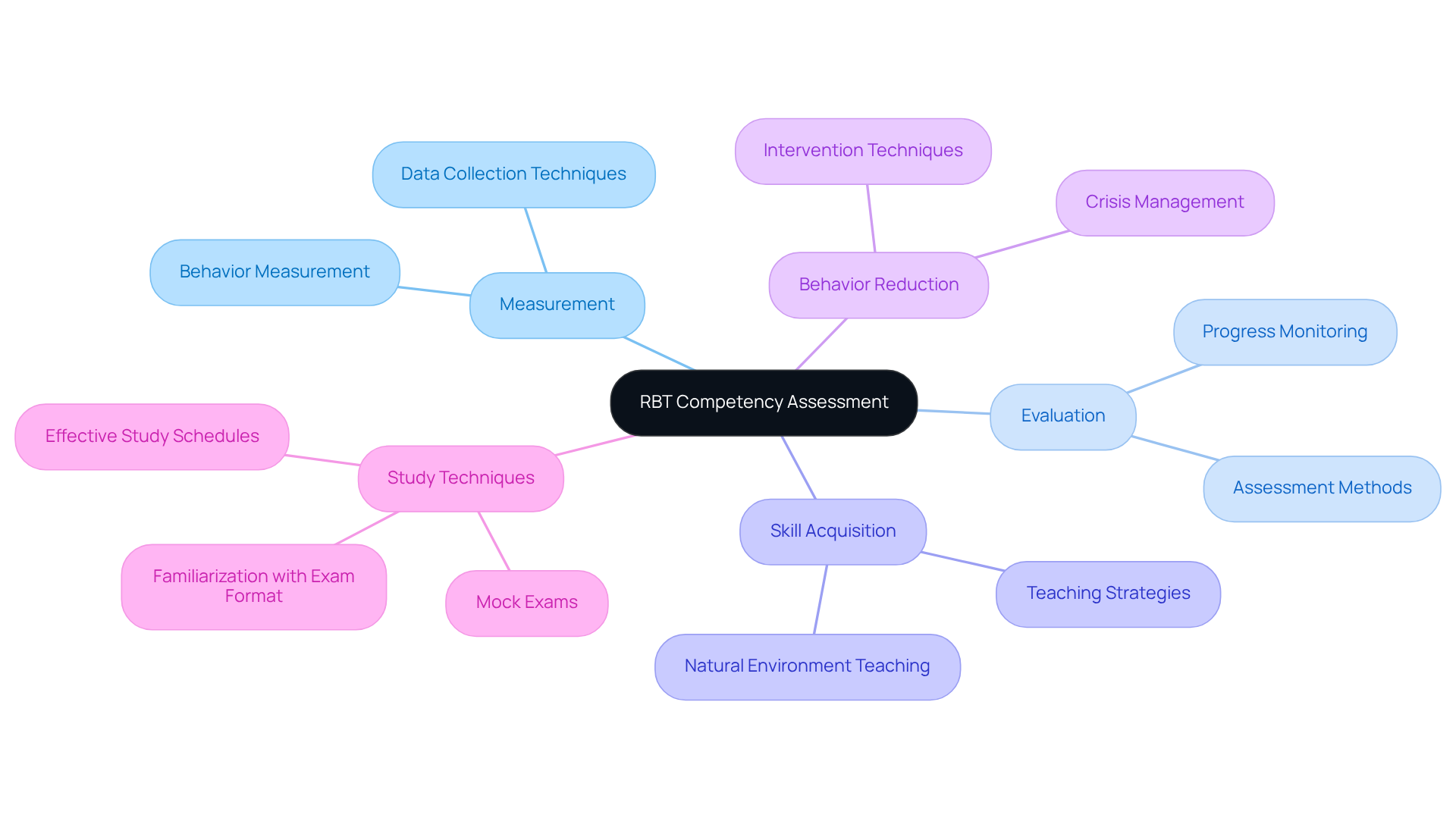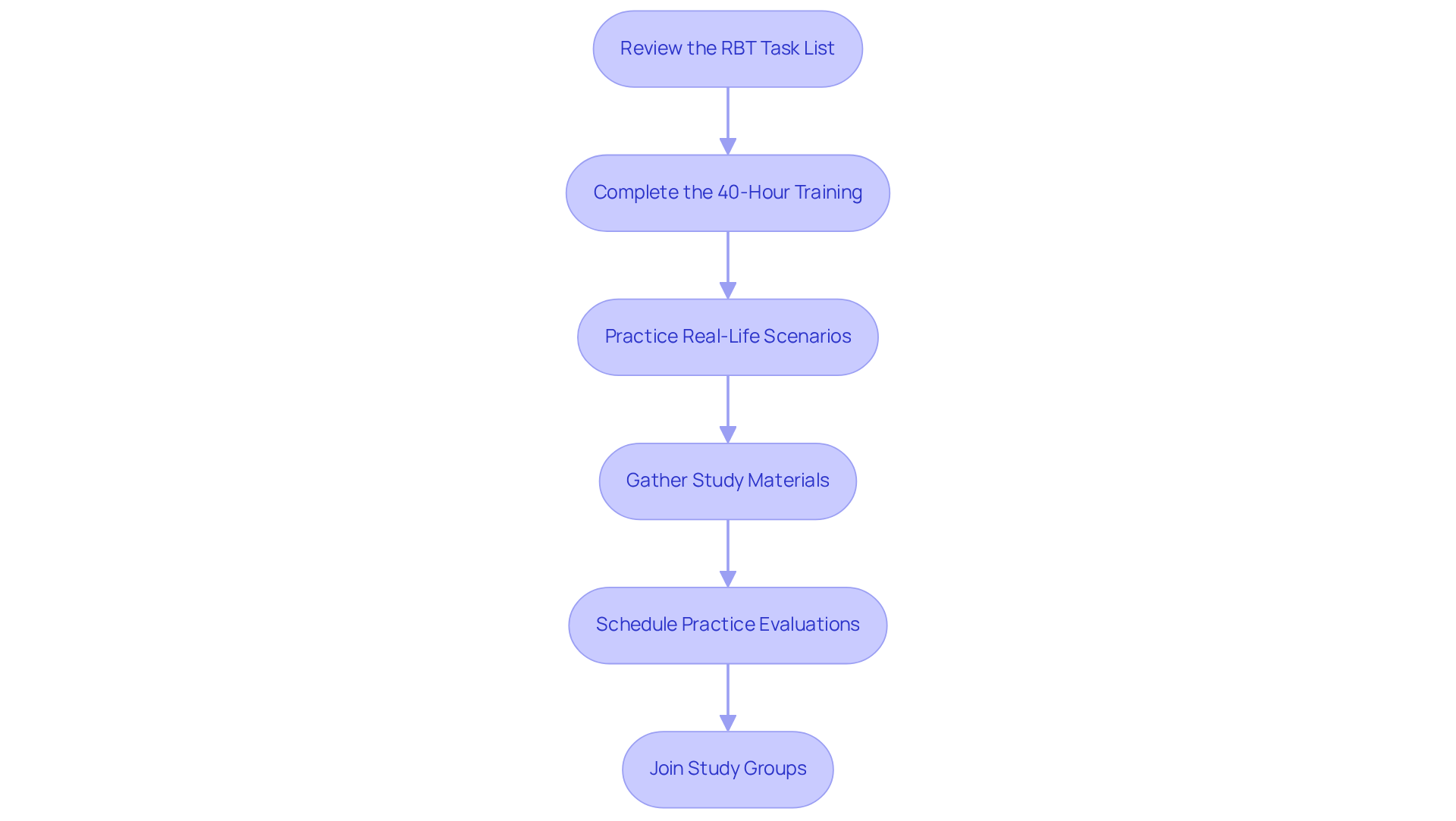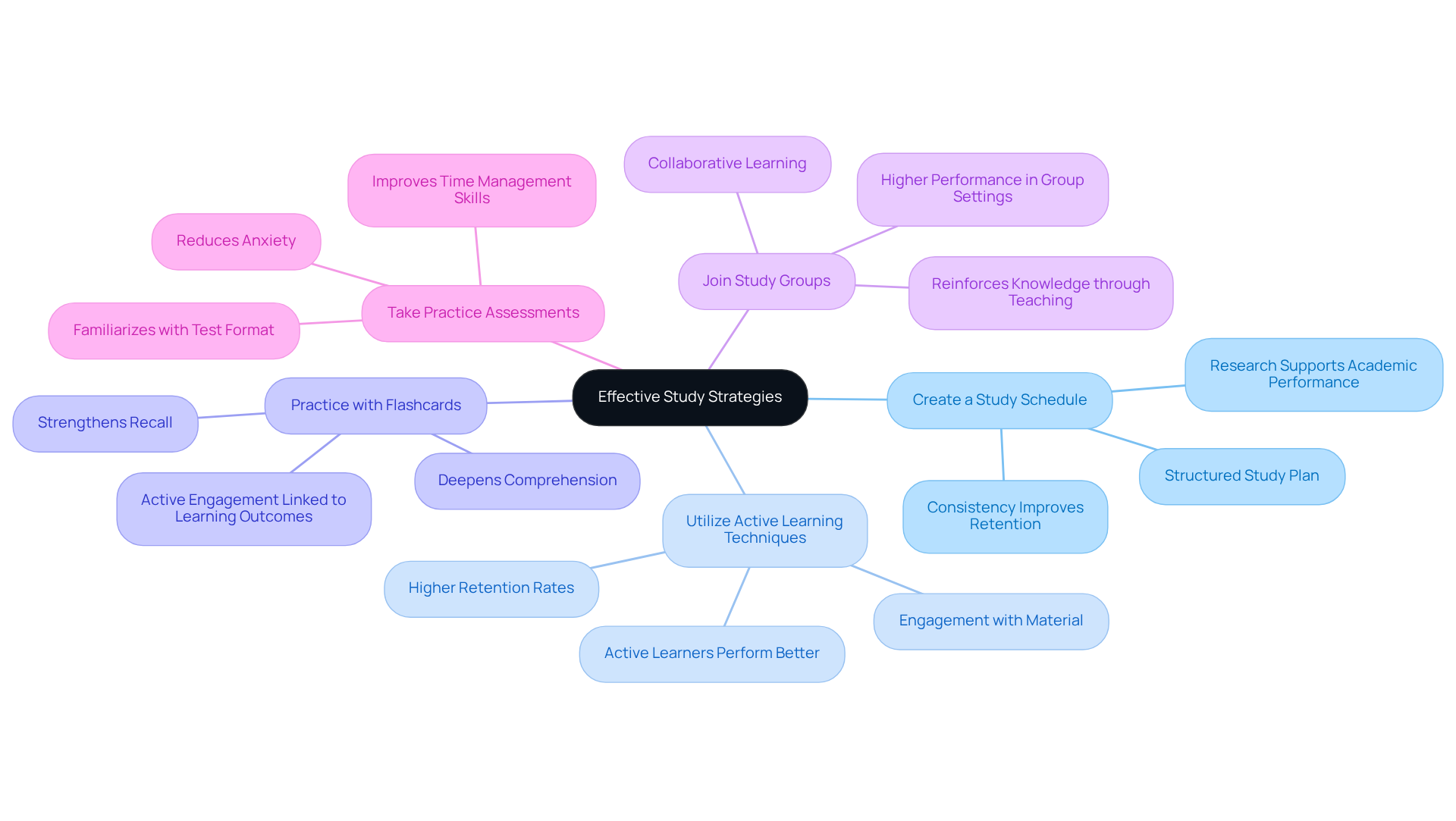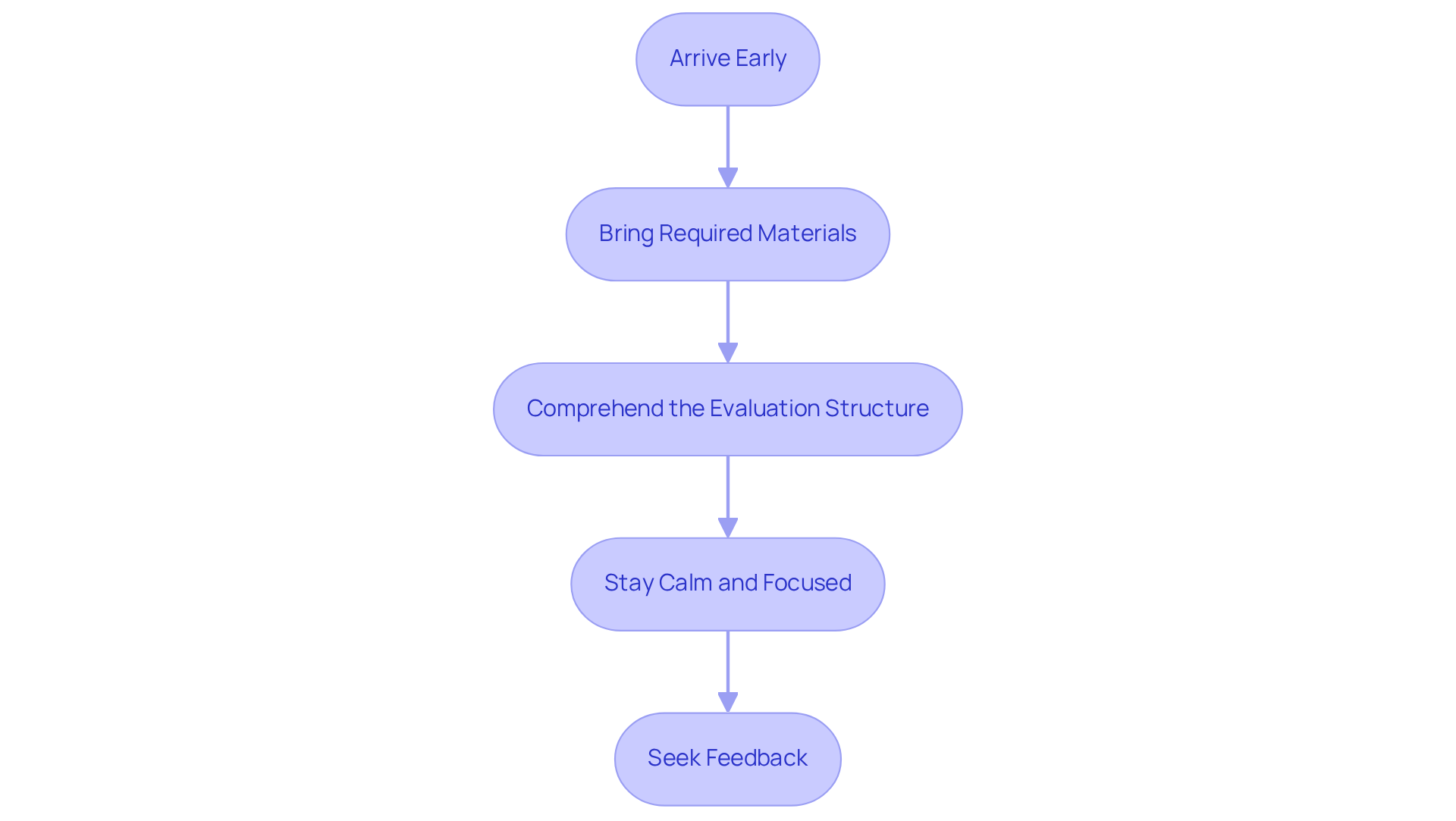September 27, 2025

This article delves into the crucial steps for mastering the RBT (Registered Behavior Technician) Competency Assessment, ensuring candidates are thoroughly prepared for success. It presents an in-depth guide that outlines the assessment structure, effective study strategies, and practical tips for the assessment day. Preparation and familiarity with the evaluation process are emphasized as vital components that significantly enhance the likelihood of passing.
The RBT Competency Assessment stands as a crucial milestone for aspiring Registered Behavior Technicians, rigorously evaluating essential skills across four critical domains. With a national pass rate ranging from 70% to 80%, candidates encounter formidable challenges in demonstrating their proficiency.
This article explores effective preparation strategies, including:
These strategies provide a comprehensive roadmap to success.
How can candidates not only meet but exceed the expectations of this demanding assessment?
The RBT assessment acts as a critical evaluation, designed to ensure that candidates possess the essential skills required to function effectively as Registered Behavior Technicians (RBTs). Comprising 20 activities, this assessment is categorized into four vital areas: measurement, evaluation, skill acquisition, and behavior reduction. Each task undergoes evaluation through direct observation by a qualified supervisor, typically a Board Certified Behavior Analyst (BCBA). Candidates must demonstrate proficiency in all tasks to succeed in this evaluation, which is an essential step following the completion of the requisite 40-hour training course.
Understanding the structure and expectations of the assessment is paramount for . Notably, the national average pass rate for first-time RBT candidates typically ranges between 70% and 80%, underscoring the challenges they may face. To enhance their chances of success, candidates should employ effective study techniques, such as:
Furthermore, the RBT assessment is crucial for BCBAs, as it provides insights into the competencies of their RBTs, ensuring effective supervision and support within ABA therapy. As you consider the implications of this assessment, reflect on how your hiring strategies align with the competencies required for success in this field.

To effectively prepare for the RBT Competency Assessment, consider these essential steps:

To maximize your study effectiveness for the RBT assessment, consider implementing the following strategies:

On the day of your RBT Competency Assessment, adhering to these essential steps is crucial for a smooth and successful experience:

Mastering the RBT Competency Assessment is crucial for aspiring Registered Behavior Technicians aiming to validate their skills and knowledge in the field of Applied Behavior Analysis. This comprehensive assessment evaluates practical competencies across measurement, evaluation, skill acquisition, and behavior reduction, laying the groundwork for effective practice in ABA therapy. Successfully navigating this assessment represents a significant milestone that can profoundly influence one’s career trajectory in behavior analysis.
Key strategies for preparation include:
Employing effective study techniques—such as active learning and collaborative study groups—enhances retention and understanding of the material. Furthermore, a structured approach to the assessment day—arriving early, being well-equipped, and maintaining focus—can greatly improve performance and confidence during the evaluation.
Ultimately, the RBT assessment is not merely a test; it serves as a gateway to professional growth and effective practice in behavior analysis. By committing to diligent preparation and embracing feedback, candidates can not only pass the assessment but also establish a robust foundation for their future careers. Emphasizing the importance of this assessment fosters a proactive approach to mastering the skills necessary for success in the field, ensuring that RBTs are equipped to make a meaningful impact in the lives of those they serve.
What is the purpose of the RBT Competency Assessment?
The RBT Competency Assessment is designed to evaluate candidates to ensure they possess the essential skills required to function effectively as Registered Behavior Technicians (RBTs).
How many activities are included in the RBT assessment, and what areas do they cover?
The RBT assessment comprises 20 activities categorized into four vital areas: measurement, evaluation, skill acquisition, and behavior reduction.
Who evaluates the tasks in the RBT assessment?
The tasks in the RBT assessment are evaluated through direct observation by a qualified supervisor, typically a Board Certified Behavior Analyst (BCBA).
What must candidates demonstrate to succeed in the RBT assessment?
Candidates must demonstrate proficiency in all tasks to succeed in the RBT assessment.
What is the national average pass rate for first-time RBT candidates?
The national average pass rate for first-time RBT candidates typically ranges between 70% and 80%.
What study techniques can candidates use to enhance their chances of success in the RBT assessment?
Candidates can enhance their chances of success by practicing with mock exams and familiarizing themselves with the exam format.
Why is the RBT assessment important for BCBAs?
The RBT assessment is crucial for BCBAs as it provides insights into the competencies of their RBTs, ensuring effective supervision and support within ABA therapy.
What should candidates reflect on regarding their hiring strategies in relation to the RBT assessment?
Candidates should reflect on how their hiring strategies align with the competencies required for success in the field of ABA therapy.
Our expert recruitment strategies and AI-driven sourcing ensure that you receive top-notch candidates quickly, without compromising on quality. Whether you’re looking for BCBAs, Clinical Directors, or RBTs, we’ve got you covered.